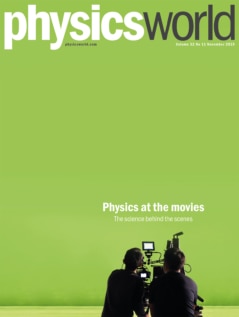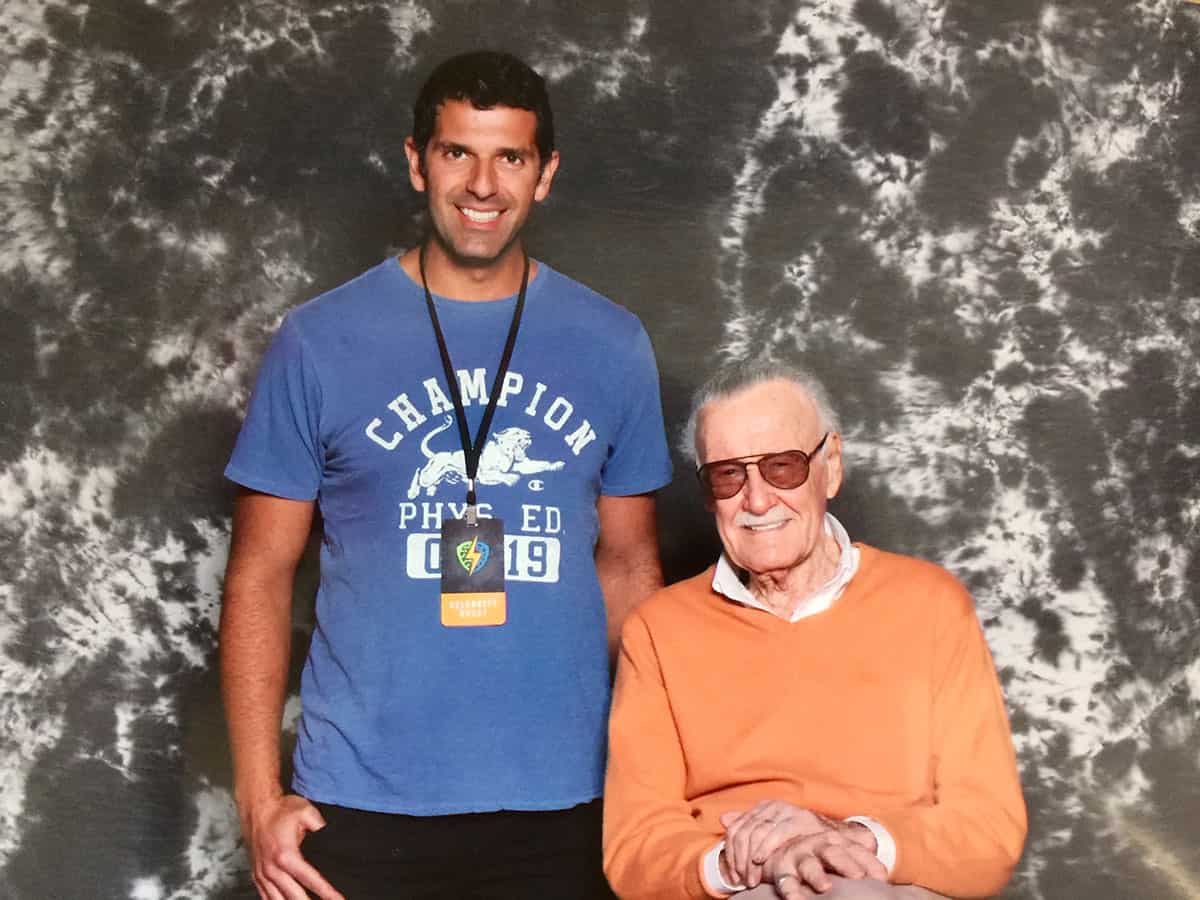Editor’s note: The following piece contains spoilers for Marvel’s Avengers: Infinity War (2018) and Avengers: Endgame (2019).
For those unfamiliar with the final two Avengers films, here’s a very quick, spoiler-heavy, synopsis. In Infinity War, the Avengers are trying to stop the villain Thanos from getting the Infinity Stones – powerful objects that each control an aspect of existence. Unfortunately, things don’t go well and when Thanos brings the Stones together using the Infinity Gauntlet, he wipes out half of the population of the universe with a snap of his fingers. In Endgame, the surviving heroes try to take the Stones off Thanos to perform a reverse snap, but he has already destroyed them. Years pass, and the remaining Avengers try to adapt, until Ant-Man (Scott Lang) reappears from the Quantum Realm where he was trapped and offers a potential method to travel back in time and collect the Infinity Stones from different points in history. And that’s where this mind- and time-bending letter fits in.
The following content is a transcription of a letter penned by an individual claiming to be Anthony Edward “Tony” Stark. The letter is dated April 1st, 2023.
I am Iron Man
My name is Anthony Edward Stark. My friends call me Tony. Everyone else calls me Iron Man.
I’m writing this because I’m at a bit of a crossroads. We’ve just completed a most revolutionary experiment – a test jump through time. And it worked. Now it’s time to take the leap back and begin fixing things. But why risk losing myself in a parallel timeline and forever separating myself from my wife and daughter? Because despite having everything I’ve ever wanted, and the two people I never knew I needed, the world is not right. It is not whole.
Five years ago, a half-god, half-raisin named Thanos snapped his fingers, adorned with six fundamentally powerful Infinity Stones. Instantly, half of all life in the universe disappeared. Friends, family and countless strangers were taken — simply erased from existence. We, the Avengers, with all our superpowers and supersuits, weren’t immune to it either. We lost…too much. We had failed. Even when we tried to get the Stones back to perform a reverse “snap”, we found Thanos had already destroyed them. Any hope we had was gone.
It had been five years since the Snap and we’d all tried to move on when, out of the blue, someone who we’d assumed had been “snapped” reappeared – the annoying and stubbornly naïve ex-con and friend to insects, Scott Lang, aka Ant-Man. Using Pym particles he can shrink down to quantum scales, and it turns out he had actually been trapped in the Quantum Realm since the original Snap and only just emerged. But for him, those five years were only five hours. Turns out time doesn’t play by the same rules in the Quantum Realm.
So, now, our ragtag group are going to use this revelation to take an unprecedented leap through time to locate (okay, steal) the six Infinity Stones, which, when united, will give us a chance to make everything right again.
The question is: how will we do it? How will we travel in time? Pure. Quantum. Magic.
You can’t go backwards in time… (but maybe you can go forward to the past)
To anyone with half a Stark brain, it should be obvious that time can only move in one direction: forward. There’s the thermodynamic arrow of time after all.
Time can only move forward because it is the dimension along which we keep track of change. The clock keeps ticking even for a pendulum, which, by almost every definition, seems to go back in time after each swing. However – and the irony does not escape me – we use pendulums to keep track of the passage of time moving forward. Even so, the pendulum has no trouble transitioning to what looks like its thermodynamic past without dragging the rest of the universe along with it. Time, after all, is relative – local to each observer.
Basically, maybe we don’t have to reverse time for everyone and everything in order to access the past. Maybe some of us can detach ourselves from this macro reality and enter a simulated one that looks close enough to some point in our thermodynamic past.
What I mean by simulating the past is a bespoke, fault-tolerant evolution of the quantum state of our time-travelling hero and their local surroundings. I know, it sounds awesome. And slightly dangerous. But, at least, all the paradoxes involving old us being offed vanish into thin air. You are always moving forward in time, even if you are not following time’s arrow like everyone else. How profound is that? You would be the tiniest rebel in recorded history.
So, forget about closed time-like curves and traversable wormholes running on exotic matter. If you want to go to the past, you just have to use good old Schrödinger to time-evolve your quantum state back in time. As your friendly neighbourhood quantum physicist keeps telling you, time goes both ways in the Quantum Realm. There, there is no past and no future.
If only… At best, you may be able to fool the universe for a few milliseconds, before the thermodynamic arrow of time takes over and you lose control of your quantum system. It doesn’t even matter that you are quantum-scale thanks to Pym particles. The second law of thermodynamics, which states that you can only transition to a state with higher entropy and is responsible for the aforementioned arrow of time, only gets more powerful as you shrink. In fact, down there, there is an infinite number of second laws of quantum thermodynamics. And they all point to the same conclusion – we are all going to die. Including the universe.
To be more precise, left to its own devices, a quantum system can only move closer to a version of itself that is completely useless. Quantum thermodynamicists call such states “passive”. You may know them as thermal states, Gibbs states, equilibrium states, whatever states. They all have one thing in common – they are extremely boring. In particular, they are a mixture of perfectly good quantum states, so that when you put them together in a special way, they become collectively useless. How is that possible, you may ask? How is it that even a few particles feel the gravitational pull of the arrow of time? Isn’t thermodynamics a theory about the collective behaviour of a large number of particles? These are interesting questions. The answer is so profound, of such fundamental importance, that even I found it surprising – for a second. Also, the answer should help us reverse the Snap.
So much time, so little to do
The frame rate of human perception is about 150 Hz (150 frames per second). This means that each frame we register represents the end result of an evolution involving, roughly, one trillion quadrillion quadrillion quantum events. Relative to the frame rate of the universe at the Planck scale, we are VERY slow. Don’t take it personally. Even an ultrashort pulse of light, the fastest thing in the universe, looks like a platypus out on a walk at 10 trillion frames per second. And that’s still 30 orders of magnitude slower than the true frame rate of the universe.
Most laws of physics probably only emerge at frame rates many orders of magnitude above the quantum limit at the Planck scale. It doesn’t matter how small you are. The problem with reversing time is the sheer magnitude of time you never get to experience. And what you can’t experience, you can’t control.
With such a large number of random events taking place within every femtosecond of existence, something amazing happens. The maths behind the infamous law of large numbers kicks in and real order can emerge out of pure chaos.
Emergence.
The answer to one of the most important and least understood question in all of science: who is to blame for the tyranny of truth? If all things are possible, how come the universe is so predictable, so boring? Where is my unicorn, damn it!
The world at Infinity
Each Infinity Stone unlocks a gate to a more fundamental aspect of physical reality. The Tesseract, aka the Space Stone, allows one to teleport, by inverting so-called bulk tensors responsible for bridging our world to an underlying space known as the Quantum Code. Physical reality is built on top of an underlying network of entanglement superhighways. That network, and the nodes in it, form the Quantum Code. To move from node to node down there, you teleport. How? Using quantum entanglement, of course. In other words, the illusion of physical movement up here is nothing but a reflection of your information teleporting from one quantum node to the next one down there.
It gets weirder. The Quantum Code is also an illusion, a ghost world. In particular, it is a hologram — a hologram of a world with no gravity. The world at Infinity.
Gravity
Did you know that gravity can exist even in a universe without any matter? As Albert Einstein pointed out over a century ago, gravity is a direct consequence of the curvature of space–time. Curvature measures how units of space and time change as they partially interconvert into each other while you move through space–time, even if you are standing perfectly still. Feels kind of like the pull of gravity, right? You don’t need to do anything to fall to the ground.
As time folds into space, the same second law of thermodynamics responsible for the one-way flow of time begins to infect dimensions of space. Because of the curvature of space–time, units of distance in space, say metres, turn into a mix of time and space — like, 10% second and 90% metre. How is that related to gravity, you ask? If each dimension of space is bi-directional (you can move forward and backwards at will), why can’t you just take off like Captain Marvel and fly out into the void? Here is why: the dimension of space extending from the centre of gravity of the Earth to you is now 10% one-way, because it is now partially composed of time. Sure, with sustained effort you can escape Earth’s gravity, but that’s because that radial dimension of space is only 10% time. Things change drastically if you find yourself near a black hole.
Near a black hole’s horizon, if you are brave enough to cross to the other side, you are no longer travelling along space towards the singularity at the centre – you are travelling along time. The dimension of space connecting you to the singularity while you were safely far away from the black hole’s event horizon, is now completely gone, turned into time. Hence the one-way trip to your doom at the centre of the black hole. You want to escape a black hole? You’ve got to beat the second law. And in order to beat anything, you first need to understand it.
The Time Stone
Whereas the Space Stone allows its wielder to unlock the power of teleportation native to the Quantum Code, the Time Stone (housed within the Eye of Agamotto) is like a construction crew that has the ability to repave the landscape of the Quantum Code with new entanglement superhighways. Destroy some here, create some there, and suddenly what used to be far is now near. When you drop a glass and it breaks, the chemical bonds that used to hold the molecules of the glass together break. Bonds are relationships between electrons at the boundary of each molecule. And every relationship in the microscopic world is a manifestation of entanglement. Rearrange how each node in the Quantum Code is entangled with every other node and you rearrange matter up here – you put the glass back together. Like running the clock backwards.
If the Time Stone allows its wielder to travel back in time, all I needed to do was reverse-engineer it. Unfortunately, for that I would need the Time Stone, and if we had that, none of this would have happened. Thankfully, the protectors and users of this stone – the Masters of the Mystic Arts – keep notes.
What jumped out at me right away was that the Time Stone could only make local temporal changes. I don’t mean local in time. I mean local in space. That may not seem like much, but it was a huge clue as to its inner workings. I already knew that the stone had to mess around with the topography of the Quantum Code, but I didn’t know how it did it. Well, apparently, it could only make local changes in the Quantum Code’s geometry at any given instance. Like a quantum computer that can only run a few quantum gates at a time. In other words, the Time Stone had the ability to replace a local patch of the Hamiltonian driving the dynamics of a region in space–time with a different Hamiltonian – one, which, when turned on could generate changes in the local state of the universe corresponding to different points in time. Of course, to do that, it needed to temporarily rewire the connections between that local patch of space–time and its surroundings. That’s the easy part.
Here comes the hard part: how do you tell the universe, which has plans of its own for how things should be glued together, that you have something else in mind? How can you beat an infinite number of second laws, which are each a consequence of emergent interactions between a quantum system and its vast environment? If you can turn off those interactions for long enough, you have yourself an isolated, coherent quantum system that is ripe for bespoke Hamiltonian dynamics of your choice. But how?!? The answer lies, of course, in the eigenvalue of an inverted Möbius strip.
Just kidding. But not really.
Stone and crystal
You see, the Time Stone is a topological time crystal. It can generate its own quantum dynamics at frame rates beyond our comprehension, despite being driven by the environment at whatever frequency, like the rest of us. More importantly, the stone has the incredible ability to create a temporary version of the world at Infinity (the world with no gravity) at the boundary of the local patch of space–time (and, hence, the underlying Quantum Code) it controls. It is effectively performing topological quantum computation on that local patch, which is impervious to constant poking by the environment. And what do you need in order to create a non-trivial topological phase of matter like the Time Stone? A Hamiltonian with twisted boundary conditions – a version of a quantum Hall system. And guess what has precisely such a twisted boundary… It rhymes with öbius.
It didn’t take long for me and Bruce Banner (my science buddy aka the Hulk) to recreate this effect. The key was having access to the Quantum Code, you know, the Quantum Realm. By creating a device that effectively replaced the boundary of a local patch of the Quantum Code with an environment of my choice, I could generate a new state in that local patch by simulating the time-inverted dynamics of a Hamiltonian whose low-energy states were topologically ordered. The state of the local patch I needed would be labelled by its eigenvalue in the Hamiltonian. And the local patch would include an Avenger shrunk using Pym particles.
But, and this is the last but, how should I choose the final target of the quantum simulation in order to effectively travel back, say, to the 80s? The answer is so simple it hurts — choose a state of the Quantum Code that looks like the 80s. Not the real 1980s. Just my version of it with enough detail to make it seem real to whoever is there. The second laws should kick in at that point and fill in the rest of the details – plus, the arrow of time will do the heavy lifting of simulating the future of the past. The idea is to create a tiny version of our macro world so I can control its initial state. This tiny world will look just like ours from the perspective of its inhabitants, but everything will run much faster there relative to our frame rate. Also, it will run backwards in time for a quick sec, before I let the arrow of time kick in again.
I plan to send Banner to go after the Time Stone, because he is the second smartest Avenger and I hate feeling small. Plus, he is a Hulk of a man. Here is how it’s going play out. He jumps into the Quantum Realm, I turn on my “world at Infinity” modulator until I observe the distinct quantum signature of a topological time crystal in the Quantum Code, I wait for a few minutes before reversing the process (hopefully he has the stone and is back in the Quantum Realm by then), and finally he emerges triumphantly in this timeline with the Time Stone. Easy peasy. We obviously then use the Time Stone to rewind time to near where we last saw the other Infinity Stones, we bring them back, reunite them, reverse Thanos’ snap, return them to their points in history and we are home free.
Simple. What can possibly go wrong? I hope the other Avengers don’t feel too left out. It would be such a pain if everyone decided they wanted to time travel too and go after all the stones at once.






